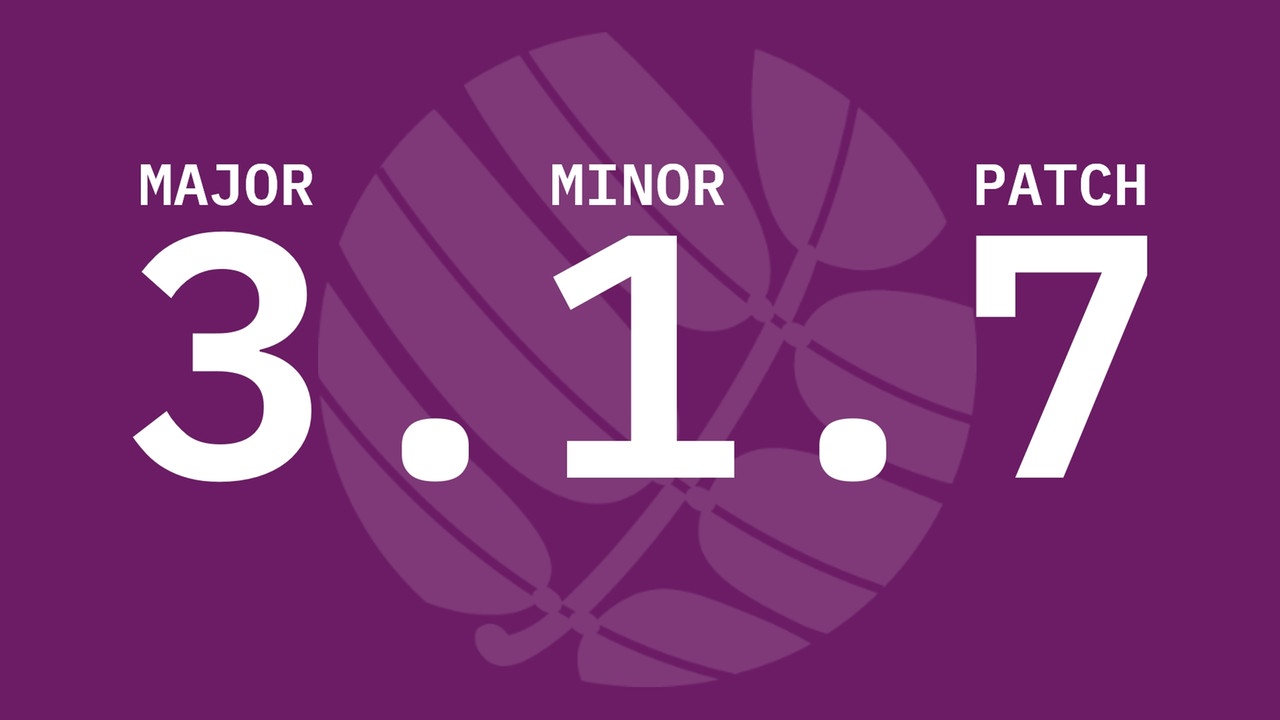Let us introduce you to the new version scheme of Sophora


In systems with many components, updating individual components can quickly become complicated. When a new version of a component is available, you want to be able to easily identify the risks associated with the update. Meaningful version numbers can help. Therefore, we have introduced a new version scheme with the launch of Sophora 3. Below you can read our considerations when creating our new system.

What exactly is the new numbering system? The version numbers of the various components of Sophora, such as Server, DeskClient or Importer, provide information on the compatibility of the components with each other and with older versions. With the change from Sophora 2.5 to Sophora 3, the version numbering scheme changes. The new schema makes it easier for our customers to see what to expect when upgrading Sophora.
Until now, only the second and third digits of the version number had real meaning. Accordingly, the first digit of the version number was changed only once in the history of Sophora, from 1.53.x to 2.0.x.
A change of the second digit, for example from Sophora 2.4 to 2.5, was called a major release. With such a change, all components of Sophora, such as Server, DeskClient or web playout had to be updated at the same time.
The basic principle was that when installing Sophora, the first and second digit of the version had to be the same for all components. So, for example a Server 2.5.20 was compatible with a DeskClient 2.5.44 and an Importer 2.5.1, but not with a DeskClient 2.4.4.
If the third digit was changed, the new version contained downward compatible bugfixes or features.
The new version scheme basically follows the principle of "Semantic Versioning". This consists of three fields for naming the changes in the system: MAJOR, MINOR and PATCH.
With each new version of a Sophora component, the individual fields are increased according to the following principle:
Therefore, after the release of Sophora 3, the next MAJOR release will logically be Sophora 4. If there is a MINOR release, e.g. a new feature, this can be integrated without further ado. Unlike before this numbering change, components with different MINOR versions can now operate together because within a MAJOR release all components are compatible. For example, a DeskClient 3.0.8 can operate with a Server 3.2.0.
Even with bug fixes, it is possible that there are issues to consider during the upgrade that might necessitate manual steps. Therefore, MINOR releases can also be increased if the new release contains only bugfixes. It is recommended to read the release notes for the respective version of Sophora to know if there is something special to consider when installing a MINOR release.
Now our version numbers are easier to understand. If you need more clarity, we from the subshell team are happy to provide more information for our users. And we are well prepared for all releases!
